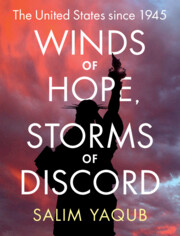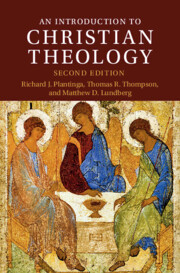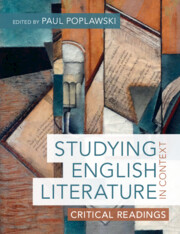Refine search
Actions for selected content:
36856 results in Cambridge Textbooks
20 - The Politics of the Environment in Russia: Extraction, Climate Change, and Indigenous Rights in the Russian Arctic
- from Part III - Politics and Society
-
-
- Book:
- Russian Politics Today
- Published online:
- 28 October 2022
- Print publication:
- 27 October 2022, pp 457-481
-
- Chapter
- Export citation
14 - Russian Labor: Between Stability and Stagnation
- from Part II - Political Economy
-
-
- Book:
- Russian Politics Today
- Published online:
- 28 October 2022
- Print publication:
- 27 October 2022, pp 318-339
-
- Chapter
- Export citation
8 - The Finite Volume Method: Advection–Diffusion Problems
- from Part III - The Finite Volume Method
-
- Book:
- Finite Element and Finite Volume Methods for Heat Transfer and Fluid Dynamics
- Published online:
- 27 January 2023
- Print publication:
- 27 October 2022, pp 269-294
-
- Chapter
- Export citation
Part I. - Foundations
-
- Book:
- Programming Languages
- Published online:
- 27 January 2023
- Print publication:
- 27 October 2022, pp 9-452
-
- Chapter
- Export citation
Part II - Political Economy
-
- Book:
- Russian Politics Today
- Published online:
- 28 October 2022
- Print publication:
- 27 October 2022, pp 197-362
-
- Chapter
- Export citation
Introduction
-
- Book:
- Programming Languages
- Published online:
- 27 January 2023
- Print publication:
- 27 October 2022, pp 1-8
-
- Chapter
- Export citation
5 - The Pendulum of Center–Region Relations in Russia
- from Part I - Political Institutions
-
-
- Book:
- Russian Politics Today
- Published online:
- 28 October 2022
- Print publication:
- 27 October 2022, pp 103-127
-
- Chapter
- Export citation
9 - Property Rights: Forging the Institutional Foundations for Russia’s Market Economy
- from Part II - Political Economy
-
-
- Book:
- Russian Politics Today
- Published online:
- 28 October 2022
- Print publication:
- 27 October 2022, pp 199-224
-
- Chapter
- Export citation
Contributors
-
- Book:
- Russian Politics Today
- Published online:
- 28 October 2022
- Print publication:
- 27 October 2022, pp ix-xiv
-
- Chapter
- Export citation
4 - The Finite Element Method: Steady-State Heat Transfer
- from Part II - The Finite Element Method
-
- Book:
- Finite Element and Finite Volume Methods for Heat Transfer and Fluid Dynamics
- Published online:
- 27 January 2023
- Print publication:
- 27 October 2022, pp 93-152
-
- Chapter
- Export citation
12 - Russia’s Oligarchs
- from Part II - Political Economy
-
-
- Book:
- Russian Politics Today
- Published online:
- 28 October 2022
- Print publication:
- 27 October 2022, pp 270-292
-
- Chapter
- Export citation
2 - Equations of Heat Transfer and Fluid Mechanics
- from Part I - Preliminaries
-
- Book:
- Finite Element and Finite Volume Methods for Heat Transfer and Fluid Dynamics
- Published online:
- 27 January 2023
- Print publication:
- 27 October 2022, pp 43-62
-
- Chapter
- Export citation
2 - Russia’s Superpresidency
- from Part I - Political Institutions
-
-
- Book:
- Russian Politics Today
- Published online:
- 28 October 2022
- Print publication:
- 27 October 2022, pp 33-55
-
- Chapter
- Export citation
Preface
-
- Book:
- Russian Politics Today
- Published online:
- 28 October 2022
- Print publication:
- 27 October 2022, pp xv-xx
-
- Chapter
- Export citation
Part III - Politics and Society
-
- Book:
- Russian Politics Today
- Published online:
- 28 October 2022
- Print publication:
- 27 October 2022, pp 363-505
-
- Chapter
- Export citation

Winds of Hope, Storms of Discord
- The United States since 1945
-
- Published online:
- 21 October 2022
- Print publication:
- 03 November 2022
-
- Textbook
- Export citation

An Introduction to Christian Theology
-
- Published online:
- 18 October 2022
- Print publication:
- 03 November 2022
-
- Textbook
- Export citation

Studying English Literature in Context
- Critical Readings
-
- Published online:
- 14 October 2022
- Print publication:
- 13 October 2022
-
- Textbook
- Export citation
Part VIII - Postcolonial Literature in English
-
- Book:
- Studying English Literature in Context
- Published online:
- 14 October 2022
- Print publication:
- 13 October 2022, pp 457-542
-
- Chapter
- Export citation
16 - Poetry and Science in the Victorian Period
- from Part V - The Victorian Age, 1832–1901
-
-
- Book:
- Studying English Literature in Context
- Published online:
- 14 October 2022
- Print publication:
- 13 October 2022, pp 271-286
-
- Chapter
- Export citation
